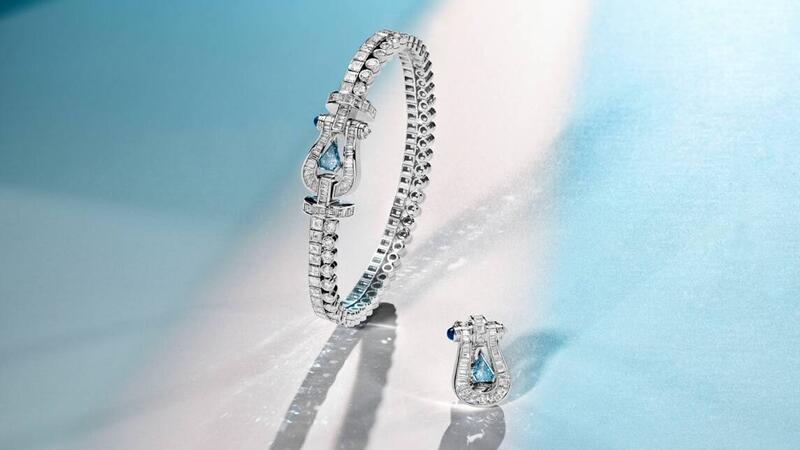The First LVMH Lab-Grown Diamond High Jewelry Is Here
Fred Jewelry is utilizing lab-grown colored diamonds, raising some interesting questions.

The maison, owned by LVMH, has focused lately on a specific shade of blue, a hue reminiscent of the vibrant French Riviera.
The color was particularly special to the brand’s late founder and lover of the sea, Fred Samuel.
The tone served as a warm reminder of his childhood and the palette of the Mediterranean Sea, changing and sparkling as the sun moves across the sky.
This summer, the brand unveiled the “Happy Blue Shades,” a collection of pieces featuring its Riviera blue through stones such as aquamarine, blue topaz, sapphire, lapis lazuli, turquoise, and amazonite, all meant to channel the glistening waters of the sea.
The color was integrated into pieces in the “Force 10,” “Chance Infinie,” “Pretty Woman” and “Pain de Sucre” lines, four of the brand’s well-known collections.
Recently, Fred announced its newest offering on the theme—a lab-grown diamond in its beloved Riveria blue.
Named the “Fred Audacious Blue,” the brand billed it as, “the very first blue lab-grown diamond, the first in the maison’s history.”
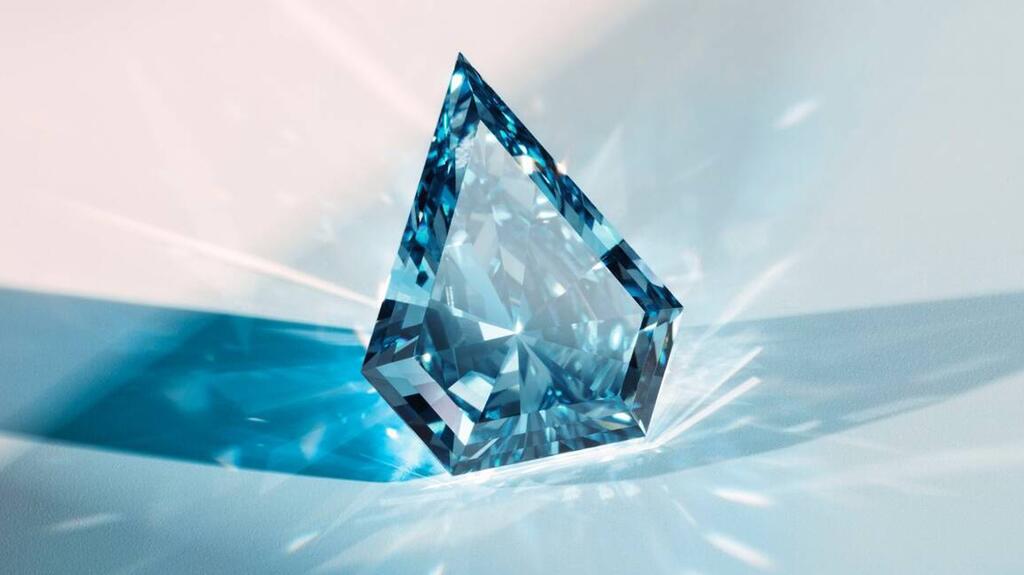
The loose diamond weighs 8.88 carats, symbolic of Samuel’s birthday in August 1908 and his first store opening in the eighth arrondissement of Paris.
Fred also introduced four smaller diamonds of the same color.
The gemstones, 0.5-carat each, are featured in four new pieces that are part of an exclusive high jewelry set, “Force 10 Duality,” inspired by the brand’s original Force 10 collection.
In each piece, the blue lab-grown diamonds are set with natural white diamonds, which Fred calls a “union between tradition and technology.”
Each stone was graded by the Gemological Institute of America (GIA) and cut in the brand’s proprietary 36-facet “Hero Cut,” first unveiled in 2022 and intentionally chosen for its appearance of a boat sail combined with a shield. It’s also a symbolic callback to the company’s founding year, 1936.
The Force 10 Duality set and the 8-carat Fred Audacious Blue will be showcased by appointment only at the Parisian jeweler’s Rue de la Paix flagship before starting a trunk show-style tour in Seoul, South Korea, in November, according to WWD.
Making The Grade
Creating the lab-grown blue diamond required what Fred said was a “skillful blend of savoir-faire and strong technical expertise.”
The 8.88-carat final product required a sizeable rough stone, specifically one weighing about 36 carats.
Fred CEO Charles Leung told WWD the diamond had taken several years of research, and that the company worked with European and American experts to produce the diamonds using the chemical vapor deposition process, or CVD. Fred also said the diamond is “fully traceable,” but did not name its partners.
The company said replicating the Audacious Blue took 18 months of technique development to “perfect and stabilize” the color.
Though LVMH did not respond to a request for comment for this story by press time, it has been widely reported that its lab-grown blue diamonds are graded fancy vivid greenish-blue with a VS or higher clarity grade.
While GIA uses a D-to-Z grading system for white diamonds to indicate the level of colorlessness, fancy color diamonds are graded in order of increasing color strength, from faint, very light, light, fancy light and fancy to fancy intense, fancy vivid, fancy dark and fancy deep.
Naturally occurring colored diamonds have been found in a full spectrum of colors, but GIA said only one in 10,000 natural diamonds has a fancy color, with blue diamonds among the rarest. One GIA researcher estimated that blue diamonds make up only 0.02 percent of mined diamonds.
Colored diamonds occur because of impurities or structural defects within the chemical composition of the gemstone.
Some environments produce colored diamonds with a secondary color. In that case, GIA includes a modifier to indicate it. Blue diamonds can have secondary colors like gray, green or violet.
Larry West, a wholesaler specializing in natural colored diamonds and an owner of LJ West Diamonds Inc., said that generally, a grade of a single color is rarer, but factors like size and strength of color all help determine the stone’s true value.
“Two colors is not as good as the straight color,” said West. “In general, people pay less for the greenish-blue [than a straight blue], but once you get into the ultra, best colors, it becomes so rare, especially regarding the size.
“Theoretically, if you have a vivid greenish-blue, it could be worth as much or more, in general.”
The Question of Price
As is the case with all natural colored diamonds, those with fancy intense and fancy vivid grades generally command the highest prices. For blues, especially large sizes, that can mean a price tag of millions per carat.
However, just like with colorless diamonds, lab-grown colored diamond prices are much lower than their natural counterparts.
Last year at JCK, wholesaler Green Rocks Diamonds displayed a variety of lab-grown colored diamonds, some set in jewelry, in a range of hues—including blues—and sizes of up to 13 carats. Green Rocks produced the stones in partnership with Fire Diamonds, which performed the color treatment.
Leung told WWD the four pieces in the Force 10 Duality set are priced at 540,000 euros total, or $569,808, on par with the price if Fred had used white natural diamonds as center stones, according to Leung.
However, he said the 8.88-carat loose lab-grown blue diamond does not yet have a price.
When I asked West what he thought, ballpark, the Fred Audacious Blue would be priced at in comparison with a natural 8-carat fancy vivid greenish blue diamond, he said a mined stone of that size and with a color distinction of vivid, likely may never exist.
If it did, it would be the largest of its kind, and would fetch an incredibly high price.
Setting Itself Apart
Colorless lab-grown diamonds today are indistinguishable from their mined counterparts, and the side-by-side comparison is a tool often used to accentuate the difference in pricing.
However, once lab-grown colored diamonds reach a certain caliber, like the Audacious Blue, they may not have a comparable mined mate due to the rarity of these stones in nature.
With the capability to manufacture diamonds with no mined counterpart for comparison, it not only raises the interesting question of price, but also that of new opportunities in the colored lab-grown diamond space.
“If you do want to sell a lab diamond as a premium product, you better do something different, and I think this is a great example.” — Paul Zimnisky, industry analyst
Perhaps LVMH knows this already.
Last year, LVMH Luxury Ventures invested in Israel-based lab-grown producer Lusix, which uses solar energy to power its facilities. At the time of the announcement at the JCK Las Vegas show, Lusix said it was able to both control the shape of the diamond and grow them in different colors.
When LVMH-owned Fred revealed an 8.88-carat blue lab-grown diamond, industry analyst Paul Zimnisky was hardly surprised.
“If there was going to be one jewelry banner within the LVMH organization [using lab-grown diamonds], it seemed like it probably would be Fred,” he said. “I would describe them as the most modern and the most progressive brand within LVMH. It seems to make sense.”
Though Leung told WWD the Audacious Blue was not meant to be a “change in strategy” for the brand, Zimnisky said he thinks their creative approach in this one-off endeavor is a good example of extracting value from the lab-grown concept.
“Doing something that’s not found in nature, I think that’s where the edge is going to be and that’s where the opportunity is going to be,” Zimnisky said.
“If you do want to sell a lab diamond as a premium product, you better do something different, and I think this is a great example.”
While Fred is the first of the LVMH brands to use lab-grown diamonds in a high jewelry collection, it isn’t the group’s first dealing with the stones.
In a similar one-time offering, TAG Heuer used lab-grown diamonds, both colorless and pink in its timepieces.
The watches are yet another example of where lab-grown diamonds allowed for an opportunity that likely wouldn’t otherwise be possible.
“If you look at the TAG Heuer watch, they used polycrystalline [diamond plates], so the actual face of the watch is diamond,” Zimnisky said. “Obviously, you could never do that with single-crystal natural diamond.”
The Latest
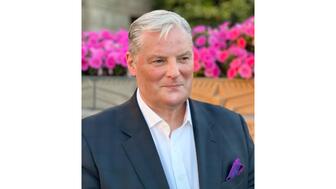
As the shopping mall model evolves and online retail grows, Smith shares his predictions for the future of physical stores.
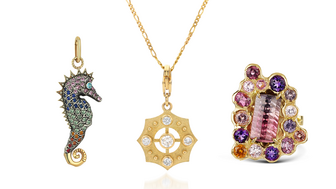
The trade show is slated for Jan. 31-Feb. 2 at The Lighthouse in New York City's Chelsea neighborhood.
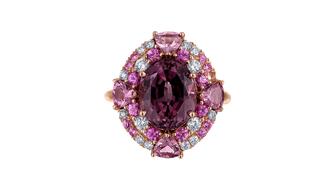
January’s birthstone comes in a rainbow of colors, from the traditional red to orange, purple, and green.

How Jewelers of America’s 20 Under 40 are leading to ensure a brighter future for the jewelry industry.
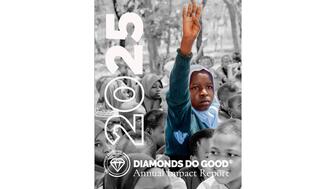
The annual report highlights how it supported communities in areas where natural diamonds are mined, crafted, and sold.


Footage of a fight breaking out in the NYC Diamond District was viewed millions of times on Instagram and Facebook.

The supplier has a curated list of must-have tools for jewelers doing in-house custom work this year.

Roseco’s 704-page catalog showcases new lab-grown diamonds, findings, tools & more—available in print or interactive digital editions.

The Signet Jewelers-owned store, which turned 100 last year, calls its new concept stores “The Edit.”

Linda Coutu is rejoining the precious metals provider as its director of sales.

The governing board welcomed two new members, Claire Scragg and Susan Eisen.

Sparkle with festive diamond jewelry as we celebrate the beginning of 2026.

The master jeweler, Olympian, former senator, and Korean War veteran founded the brand Nighthorse Jewelry.

In its annual report, Pinterest noted an increase in searches for brooches, heirloom jewelry, and ‘80s luxury.

Executive Chairman Richard Baker will take over the role as rumors swirl that a bankruptcy filing is imminent for the troubled retailer.

Mohr had just retired in June after more than two decades as Couture’s retailer liaison.

Shekhar Shah of Real Gems Inc. will serve as president of the Indian Diamond & Colorstone Association in 2026.

This year’s good luck charm features the mythical horse Pegasus, and is our first Piece of the Week of the new year.

As part of the leadership transition, Sherry Smith will take on the role of vice president of coaching strategy and development.

It marks the third time the country has headed the Kimberley Process. Ghana will serve as vice chair.

The new Bulova x Stetson designs highlight two animals often associated with the American West—the bison and the Texas Longhorn.

Its residency at Yamron Jewelers will run through May 2026.

From influential executives to innovative designers, we pay tribute to the people we said goodbye to this year.

The retailer is expanding into areas with large Indian and South Asian populations.

The Italian brand has opened its first flagship amid the peaks of the Dolomites in Madonna di Campiglio, Italy.

The new curation at the Natural History Museum of Los Angeles County showcases rare gem and mineral specimens in their uncut, natural state.

The couple pleaded guilty to concealing at least $127 million in cash transactions at its precious metals businesses.










